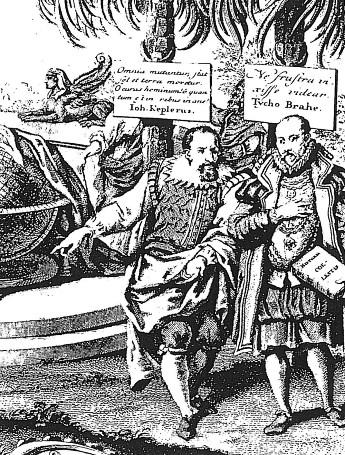The publication of De revolutionibus by Copernicus in 1543 initiated a revolutionary change in the views of people on the cosmos and movement of celestial bodies, but at the beginning the process was slow.
Copernicus believed that the real structure of the world had been discovered, but to describe it he used the traditional geometrical patterns of ancient astronomy in which there was no interest whatsoever in the causes of the planets’ movement. Scientists from those times realised that the geocentric astronomy of Ptolemy was rather inaccurate in anticipating locations of the planets and therefore the work by Copernicus was welcomed with great expectations.
On the basis of that work Erasmus Reinhold compiled the heliocentric Prutenicae tabulae coelestium motuum (Prutenic Tables), the aim of which was to commemorate Copernicus’s achievements, ‘whose efforts and research revived the studies of the movement of celestial bodies, studies which were about to collapse’. The astronomical tables, however, constructed on the basis of the Copernicus model, did not provide a significant improvement in the accuracy of prediction of the planets’ locations on the celestial sphere: the maximum errors still reached a level of several degrees, which would amount to a couple or even several diameters of the Moon.
 A fragment of an engraving from Atlas Coelestis by J.G. Doppelmaier, Nuremberg 1742
A fragment of an engraving from Atlas Coelestis by J.G. Doppelmaier, Nuremberg 1742
In November 1563, a young Danish astronomer, Tycho Brahe, while observing the conjunction of Jupiter with Saturn found that Ptolemaic Alfonsine Tables were wrong in predicting this phenomenon by about a month, whereas the Prutenic Tables by about two days. He then declared that the two errors meant that the real revolution in astronomy had not yet taken place. Brahe, in the programme which he had initiated of refreshing the knowledge of the universe, assumed that it would be possible to develop a new model and to set its parameters, basing them on a long series of observations of the highest possible accuracy. In his observatory located on the island of Hven, Brahe constructed the most precise instruments that were known to astronomy in the times before the invention of the telescope.
With their help, for nearly 20 years he observed stars and planets until the year 1597, reaching an accuracy in defining their positions that would amount to just the minute of arc (1’). In that time Brahe and other European astronomers also found that the 1577 comet was moving in the space among the planets, which meant that they were not supported on fixed spheres, as the traditional cosmology implied. That way astronomy at the turn of the 16th and 17th centuries faced the possibility of improvement of models of planetary movements – owing to Brahe’s observation material – as well as the need to discover the real causes of these movements. In both cases it was Johannes Kepler who made the important step.
With the help of thorough observations of Mars collected by Brahe, Kepler discovered that planets do not move in circles, as the ancient astronomers and Copernicus had assumed, but in ellipses. In one focus of the elliptical orbit was the Sun, which justified Kepler’s assumptions that it was the physical cause for planetary movements. He announced his discovery in 1609 in a work entitled Astronomia nova (New Astronomy) which was very different from the typical astronomical treaties of that time, as it was a record of Kepler’s struggle with the observation materials, the problems left over from the previous era and very often it gave an account of mistakes made by the author.
This is why Kepler’s new astronomy – the heliocentric one, but referring to ellipses, and explained by celestial physics (which we now know to be wrong) – very slowly won recognition among scientists. It was helped by the publication of Rudolphine Tables in 1627, which soon turned out to be more accurate tables of planetary positions than those calculated on the basis of the system of Ptolemy or the works of Copernicus. It was thanks to observations of Mercury passing against the background of the Sun, which could be observed on 7th November 1631, that Europe could become convinced about that. Pierre Gassendi in Paris stated that Kepler’s predictions had been miscalculated by only 14’, while the Alfonsine Tables by 4o25’, and the Prutenic Tables by 5o. It is also worth mentioning that in his observations Gassendi used a telescope, which had already been changing the face of astronomy for more than 20 years.
 English (United Kingdom)
English (United Kingdom)  Polski (PL)
Polski (PL) 





